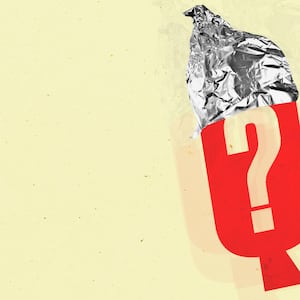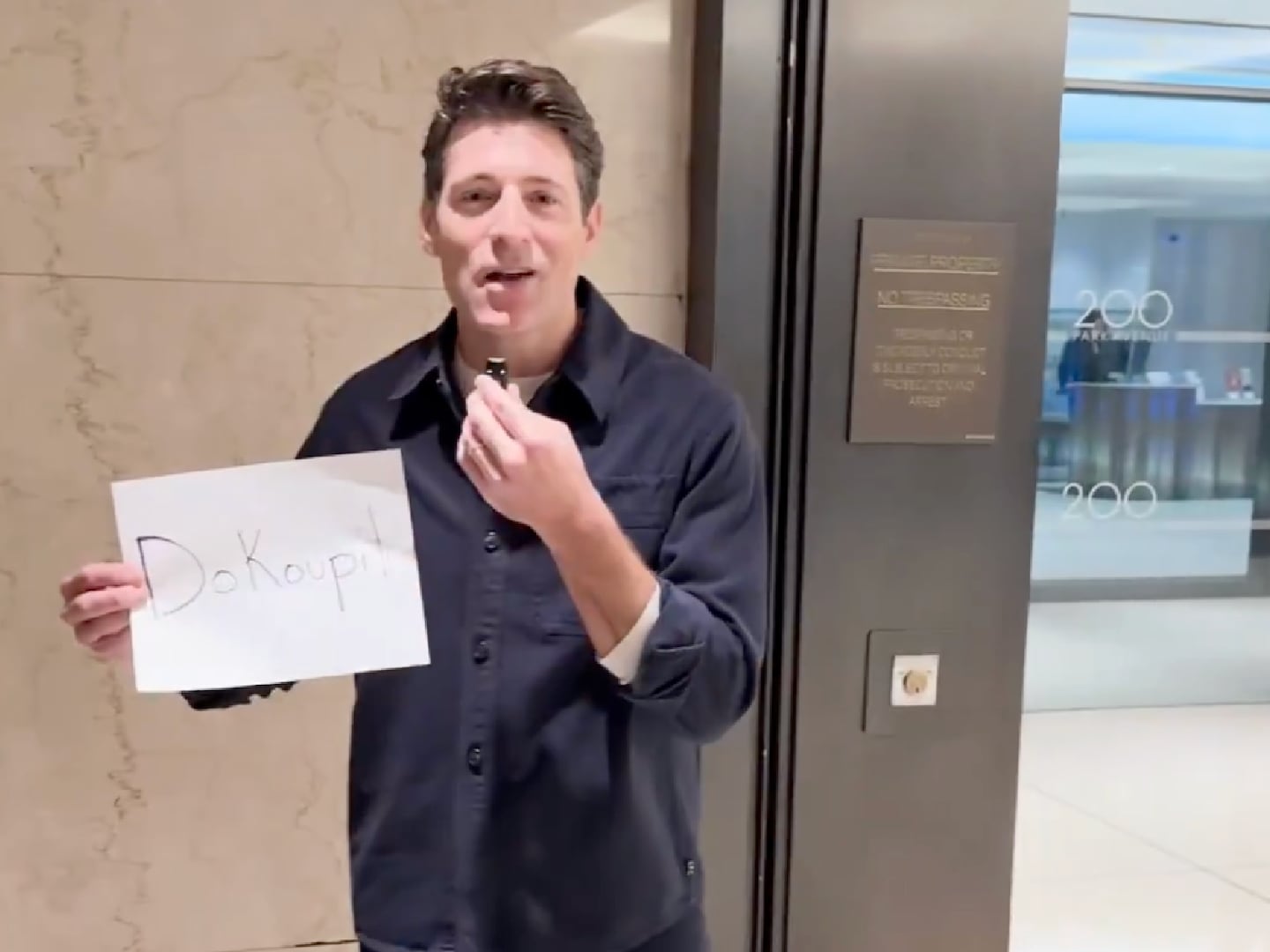Tuesday was supposed to be big for QAnon followers. Mass arrests were coming. Or revelations of satanic pedophilia rings. Or something, any payoff after nearly a year and a half of agitating for their bizarre conspiracy theory.
The arrests didn’t come, just as they’ve failed to come at umpteen other prophesied dates. Then, seven minutes before midnight, QAnon fans got something almost as comforting: President Donald Trump tweeted the video of a prominent QAnon personality.
QAnon is a far-right conspiracy that falsely accuses President Trump’s opponents of involvement in child sex-trafficking and sometimes cannibalism. Over its 17 months of existence, QAnon fans have regularly invented new “deadlines” for the pseudo-fascistic purges of their enemies, which they claim are coming at any moment. But the movement hasn’t passed with its deadlines. The original theory is morphing with time, not diluting as much as it is seeping into America’s bloodstream.
When QAnon began with a series of anonymous posts in the troll-ridden forum 4chan in late October 2017, the theory promised near-immediate results. The poster, “Q,” implied he was a military official with access to privileged information about Trump’s foes. Former Hillary Clinton aides John Podesta and Huma Abedin would be indicted on Nov. 3 and 6, respectively, the anonymous poster claimed.
Readers on the right-leaning forum rejoiced. When the date passed without the predicted arrests, Q spun up more predictions. New revelations about “taking back our great country” would come in the following days, he wrote. Trump opponents in the media would be arrested. Trump opponents would commit suicide over a specific weekend.
None of the prophecies came true, and some followers defected. But rather than turn on their anonymous prophet, other followers simply adopted looser interpretations of Q’s claims. When expected mass arrests failed to transpire on Dec. 5, 2018, some QAnon followers churned out bizarre memes of George Bush’s funeral to claim the arrests had in fact happened on camera during the event. Others claimed Q’s references to “D5” were actually military code.
The interpretations grew even less credible in the following months. Some QAnon fans claimed mass arrests would occur Jan. 19, because the date was “National Popcorn Day” (popcorn is a common QAnon theme, in reference to Q’s appeals to “enjoy the show”).The promise of March 19 arrests were born of the same, increasingly absurd logic.
“3/19/2019 (7) is: 77 days from 1/1/2019,” one Twitter account reasoned, and “128 (11) days from 11/11/2018.”
Vague messages like this, frequently repeated, were enough to meme the date into QAnon significance.
“Restored Republic 3-19-19,” one QAnon follower posted. “Must see!”
And unlike earlier failed predictions, which saw some followers leave the movement or express discouragement, this latest failure appears to have already vanished down the movement’s memory hole. QAnon’s failures are so numerous they’ve become an ambient white noise that true believers can tune out.
In a way, it doesn’t matter what QAnon is about anymore. Its authors and adherents have layered it with so many layers of plausible deniability and so many fringe interpretations that they can pivot from a failure or shed an unpopular arm of the theory like a tree dropping a dead limb. Believers variously subscribe to offshoots about time travel, reptilians, and life elixirs made from children’s blood, even if those theories don’t explicitly appear in Q’s posts.
With the theory’s mutation has come its appeal to a greater mass of people. In Germany, Twitter users hijacked QAnon hashtags to drive support for candidates from the far-right Alternative for Germany (AfD) party.
Although the theory only explicitly refers to American politicians, its claims about shadowy networks of world power align with long-running, often-anti-Semitic conspiracy theories on the right. The movement has spawned its own offshoots in the U.K. and Canada, where some believers are also members of far-right groups, or have marched alongside them at Yellow Vest demonstrations.
True believers have also talked of superseding Q, whose promised mass arrests always seem to be one more prophesy away.
In a February video, first flagged by Right Wing Watch, a QAnon supporter announced that he was “all for citizen’s arrests at this point.”
“So am I,” Liz Crokin, a prominent QAnon promoter replied. “This has dragged on for too long. We need to start seeing arrests of the real criminals,” adding that, if not, “we are going to start seeing vigilante justice and that could get really dangerous and that could cause a civil war in this country.”
On March 19, as the latest round of promised arrests seemed less and less likely, a popular QAnon Twitter account released what appeared to be a hit list featuring prominent Trump critics villainized by the theory.
The theory has already been linked to murders. In January, a QAnon follower allegedly murdered his brother with a sword, under the belief that his brother was a reptilian. On Monday, an alleged hitman accused of killing the boss of the Gambino crime family appeared in a New Jersey courtroom with “Q” and related phrases scribbled on the palm of his hand.
And on Tuesday night, in the final moments of the much-hyped 3/19, Trump tweeted a 2017 video of a TSA agent patting down a teenager for an uncomfortable period of time. The video supported Trump’s frequent grievances with the TSA. But it also backed up QAnon believers’ claims that the government is orchestrating a pedophilia ring, which only Trump can bust.
The video Trump tweeted came from a QAnon-backing conspiracy account, which hawks books on fringe beliefs. The account promoted those books aggressively after Trump retweeted the video to his 59 million followers.
Q’s clues about a happy 3/19 had come true for someone after all.







